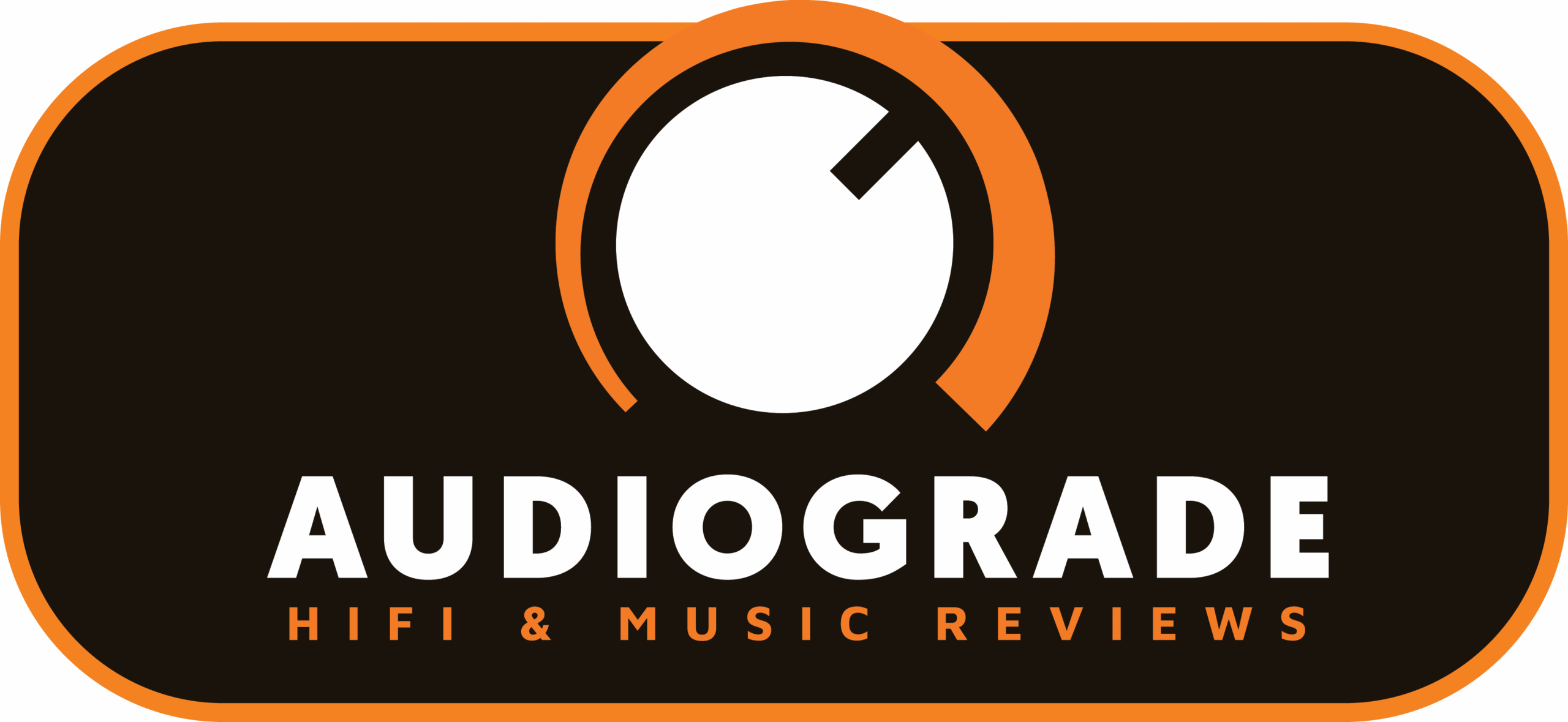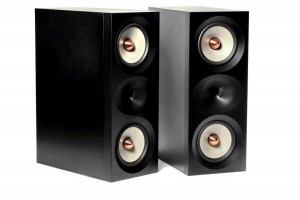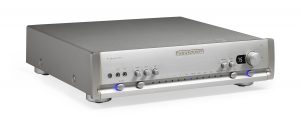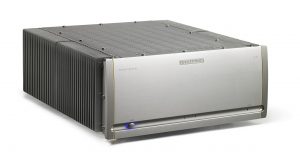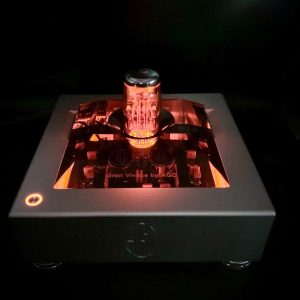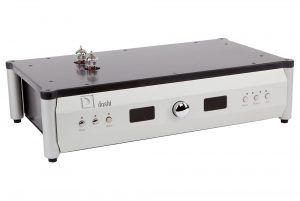Octave Audio is a German company founded in 1968 by Karl Heinz Hofmann; initially it produced transformers. In 2000, his son, Andreas Hofmann took over the business, and from then on it has been called Octave Audio. We are testing the top Jubilee system.
Although the first Octave amplifiers were made in 1975, and since 1977 they were all tube devices, already in 1968 Mr. Thomas's father opened a factory producing transformers of his idea. The Polish company Fezz Audio shares a similar history with Octave—for them it also all started with the senior of the family, producing toroidal transformers. And only on this basis the company manufacturing amplifiers was later created.
Initially, German products, made for example for the medical industry, were called Hofmann. And we already know why Octave is not named after its founder, even though it was a popular choice at the time, let me point you to Mark Levinson, Conrad Johnson, etc.
When asked by me about the source of his success, Mr. Hofmann junior says:
It may not be obvious, but the Octave has been in the market for around 40 years. From the very beginning, my approach to implementing my own solutions was based on the fact that it would only be possible if all the important components of the tube amplifier were developed and manufactured in-house. This applies to the power supply, output transformers and line transformers, which means that we are 100% independent from external suppliers and their designers. Thanks to this, our projects can also be very flexible and unique. The production of mechanical elements is outsourced to specialists based in our neighborhood.
The company's lineup includes only tube amplifiers, in the form of preamplifiers and power amplifiers. The Jubilee, which includes the tested PRE preamplifier and MONO SE monoblocks, is a completely separate series. The idea of the series was born in 1993 and it was to be a part of the celebration—as the name suggests—of the anniversary of Octave.
The development process of the preamplifier took as long as five years—the first version of the PRE was presented in 1998, and the next five years were spent on the development of the AMP power amplifiers. The set was not available until 2003, ten years after the initial idea behind it. As we wrote in the past about the earlier version of the preamplifier, until today Andreas has not come up with anything better and there is no indication that this will change any time soon.
The set includes a tube PRE preamplifier and a pair of AMP monoblocks, recently offered in the MONO SE version. These amplifiers featured first KT88 tubes, eight per channel, and currently replaced with KT120. Their distinguishing feature from the design side is the use of marble in noble varieties on the front panels, as well as the appearance of the amps—these are large, very heavy "towers," reminiscent of the once popular Mark Levinson amplifiers, or the Statement amplifiers by Naim.
And now twenty-four years have passed since the introduction of the preamplifier, and nineteen years since the power amplifiers entered the market. At that time, Poland joined the European Union and NATO, we have over two years of devastating pandemic behind us, and our neighbors have been invaded by Russian troops, destroying towns and villages and murdering civilians. The world has changed beyond recognition and yet, the Jubilee is still going on.
In addition, the Jubilee amplifier seems to been suspended in time. Looking at the models from the early 2000s and at the present one, without taking a closer look at them, it would be difficult to find any differences, except maybe for a different type of marble used. However, changes have taken place, only subcutaneously, so to speak, or inside the devices. The layout hasn't changed much, but it is not the same either. However, it is difficult to find information about it on the manufacturer's website and so it is easy to confuse the model from, say, ten years ago with the latest one.
Octave Jubilee timeline
1998 – Jubilee PREAMPLIFIER
2001 – the second version of the Jubilee PREAMPLIFIER
2003 – Jubilee POWER AMPLIFIER 8 x 6550 C | 240 W/4 Ω
2013 – the second version of the POWER AMPLIFIER: Jubilee HP 8 x KT120 | 400 W/4 Ω
2015 – the third version of the POWER AMPLIFIER: Jubilee MONO SE 8 x KT120 | 400 W/4 Ω
A few simple words…
Andreas Hofmann
Owner, designer
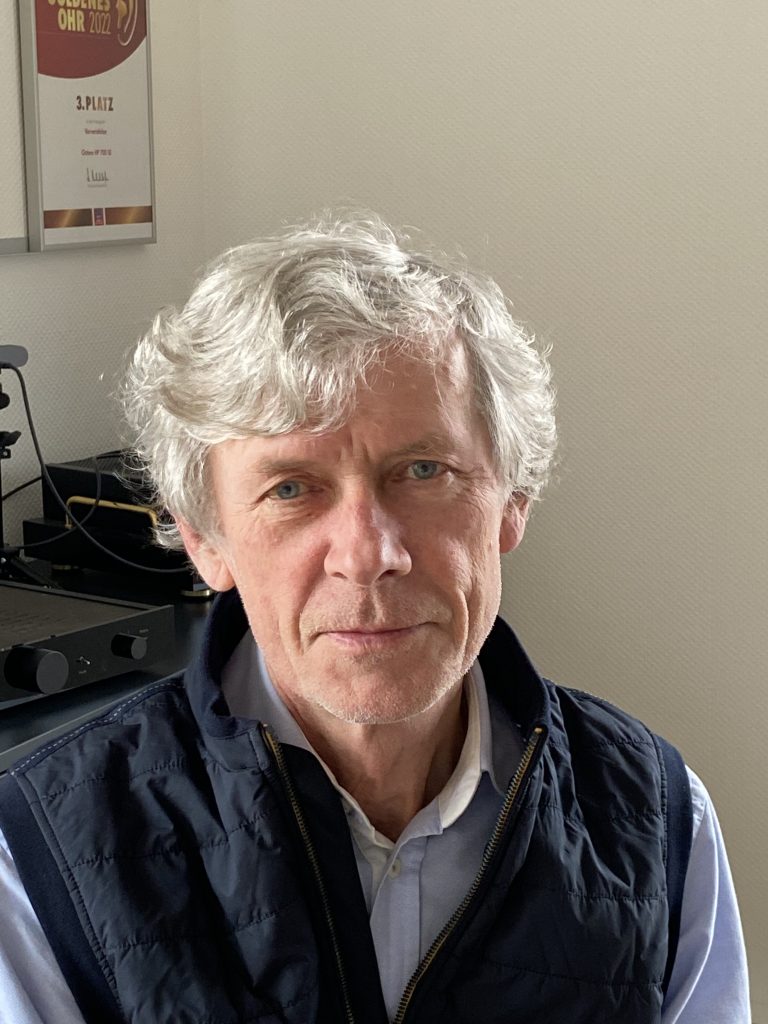
Wojciech Pacula Could you explained what changed between the first Jubilee pre and power amplifiers and the latest ones?
Andreas Hofmann In the Jubilee PRE I did not do so much changes. The main changes were made in 2001, beside some minor modifications in the tube set over the years. The Preamp has been built practically unchanged since then.
This is different with the Jubilee power amplifier. The Jubilee Power amp was unchanged until 2013, with the tube set of 8 x 6550 or KT88s. Then there was the optional High Power version with the KT120, with output increased up to 400 W. These versions were replaced by the MONO SE version in 2015. The SE version is equipped with the KT 120 in series. Another feature that you can see from outside are the 8 BIAS controls, one for each power tube instead of one master regulator for all eight power tubes like in the previous versions. Since 2015 the Jubilee Power MONO SE version remains unchanged.
WP What else has changed in the meantime in the amplifier?
AH The difference between the older Jubilee Power amp and the SE version is a redesigned driver circuit, an overworked "super symmetric" output transformer and a power supply with a higher power reserve. Additionally the power supply has less magnetic stray field and a higher efficiency due to the "better" mains transformer. Zero hum noise ( less than 0.2mV ) in the output is important for me because we have a lot of customers with high efficiency speakers in the far east.
WP Have the idea behind Jubilee series changed over all those years?
AH No, nothing changed. The Jubilee Pre is still unique in our range due to its zero feedback amplifier design. The power amplifier continues to be our top model in terms of sound and technology and will continue to play the role of the top model without compromise.
This is a fact for high Power Push Pull A/B - Pentode amps, but on the other hand I am working in the field of Single-Ended and Class A amplification + Class A Push Pull design in general. Of course these designs are limited in terms of output, but in respect of the sound characteristics and the match with various speaker designs, new variations open up. High efficiency speakers with a high resolution are difficult to match with an amplifier in general. This is a grey zone and not easy to analyze. But with our two SE amps and with the V 70 Class A integrated amp we get a very good response from the customers.
WP Did new power tubes change the sound of the amplifier?
AH Not really, although tubes like the KT120 have a potential that has to be worked out first. This is the higher output on the one hand and a difference in the sound on the other. When I started to work with this tube I thought that the sound was bad, but after optimizing the design and changing some sound relevant parts I found the sound to be very good. In my experience it was interesting to see that also the older KT88 and 6550 benefited from these changes.
WP What about availability of the Tung-Sol tubes in the time of war?
AH Difficult to say at this time, we have a large stock and I hope that the supply will normalize again in the next 4-6 months. But surely the prices will rise.
WP Tell me about the circuits you used in the preamplifier and power amplifier, I mean what type of circuits did you use?
AH I do not know if there is a typical term for my amplifier designs. Especially the driver stages, phase splitter and so on. An important aspect of my power amps is the design of the output stage as true Pentode design. Not Ultralinear and Not triode connection. Pentode design seems to be criticized in some audiophile circles, but in my opinion this mode has more advantages than disadvantages.
The amplifier cannot be divided into a few principles, I think the optimum match of all circuit parts, including the power supply and the output transformer is the key to a perfect amplifier design.
The Jubilee PRE for example is consisting of the tube input and tube a main amplifier design in combination with an open loop output buffer to drive the RCA and XLR Output.
WP How important for you is the power supply section?
AH Very, very important, not only the stability of the power supply also the noise rejection of the mains distortion is critical.

WP Who manufactures transformers you use? Is there something special about them?
AH We produce all transformers in-house, each transformer and output transformer is optimized and tailored to each model. We have two Meteor winding machines, this type is extremely precise and due to the programmed process very uniform in the winding quality. See the pictures of the Meteor 1—the machine looks tiny, but it weights as much as 150kg. The power transformers are cast in resin in a vacuum, the output transformers go through a similar process.

Jubilee PRE
The PRE is a tube preamplifier with an external, solid-state power supply. Since the previous version of this device, tested by us in 2012, i.e. 10 years ago (!), its electronic circuit has changed a bit, and the biggest change concerns the volume control. Now the attenuator is a classic Alps pot integrated with the motor, so the preamplifier can be controlled using a remote control. This is a step back when it comes to the class of the attenuator, because the previously used Japanese products of the Tokyo Ko-On Denko belonged to the best in the world, but it is a step towards convenience.
The remote control is known from other devices of this company and it is an example of simplicity. There are only two buttons on it allowing one to increase or decrease volume level. It is made of metal, but relatively small therefore it is easy to handle. In order for the preamplifier to "see" it, one has to connect an infrared receiver with a cable to the RS-232 socket. The receiver can be fixed on the wall behind the device, or in front of it, wherever user can easily point the remote at it.
The Jubilee PRE impresses with its design and its electronic circuit is divided into two sections. There are gain circuits in the larger one, and a power supply in the smaller one. The amplification section features tubes—there are five of those in it, all of them from the ECC82 family. Andreas Hofmann, a fan of NOS tubes, uses their sophisticated versions—he recommends, for example, to use the rare E80CC in the input. In the tested unit I found the Russian Tung-Sol tubes and Slovak ones by JJ Electronics—the latter in the ECC802S, i.e. low-noise version. Almost the entire chassis is made of aluminum.

FRONT
The front of the device has a characteristic shape and has been optically and mechanically divided into three parts. The main element, made of decorative marble, draws attention. On its sides there are slightly higher aluminum bars.
In the center of the stone fragment there is a large volume knob, with the company logo underneath it. The knob is pleasant to use, but indicating its position is very difficult from the listening position. It was only cut on the side, forgetting we can see its front. Maybe the solution would be an alphanumeric display featuring LED modules? On both aluminum fragments there are smaller knobs, with red LEDs next to them. The left knob selects the sound source—either a set of inputs without a recording loop (Source), or two inputs with a loop. This knob also has a Mute position. The right knob is the actual input selector.
The upper part of the device looks interesting, because it is not an ordinary cuboid. It looks more like McIntosh or Audio Research products, because on top of the wider chassis there is a narrower, but higher one and long handles were added to the sides. The top cover also consists of three elements—the side ones, perforated are made of aluminum, and the middle one is made of smoked glass. There are several LEDs underneath it—some present voltage patterns in the power circuits, but one shows whether the power supply capacitors have discharged after turning off the preamplifier.
There are four buttons on the top panel. The first is to change the gain of the circuit (High: 17.5 dB / 23.5 dB - for RCA/XLR/Low: 10 dB/16 dB - for RCA/XLR). In my system, as in the case of the previous version of the preamplifier, I used the "Low" position, in which the signal-to-noise ratio is as much as 8 dB higher than with the High. The second button will change the absolute phase, and the next two will set the way of copying between two recording loops.

REAR
The back panel is divided into two parts. There are the inputs on the left one—these are four RCA sockets and two balanced XLR. The latter duplicate the two RCA inputs. The symmetrical inputs are designated CD and a phono input. The latter is actually a line input, but marked as phono meaning it is "intended" for a phono preamplifier.
The latter is wired like an RCA, to which it is parallel, and the CD input is specially de-symmetrized in transformers. However, it is worth bearing in mind that it has a much lower input impedance than RCA—2 kΩ vs 100 kΩ. Next to it, we have three toggle switches—with one we select the active RCA input, with the second we disconnect the ground from the chassis, and the third one is the active Phono input.
The second section contains the outputs and two tape loops. There are four outputs—two pairs of balanced XLRs (pin 2 = hot) and two pairs of unbalanced RCAs. Next to it, there is also an excellent multi-pin screw socket for the power supply cable.
The components are very nice, and so are those in the power amplifiers. These are high power precision resistors, ERO / Vishay capacitors etc.

POWER SUPPLY
The appearance of the power supply has been adapted to the amplifier—this is not another, black, ugly box, but a fully-fledged element of the set. The front panel looks similar to the amplifier's—it consists of two aluminum plates and a slate insert. There is only one button with accompanying a blue LED. On the back there is an IEC power socket, two Neutrik combi sockets, used for remote switching on of power in the power amplifiers, and a power cable—it's quite long and shielded.
The inside of the power supply is divided into two sections using an aluminum screen. In the back there is a very large power transformer with classic EI plates. It is located inside a large screen and flooded with vibration-damping material. A power switch is bolted to the screen, extended to the front panel with a long axis.
In the "clean" part there are two complete power supplies, with fast (i.e. low noise) Shottky diodes (the third rectifier with the same diodes is located in the amplifying module). There are also stabilizing circuits, a microprocessor that controls the warming up of the tubes, etc. The chassis is made of aluminum. The power supply stands on three rubber feet. Preamplifier—on four.
Jubilee MONO SE
Each Jubilee MONO SE amplifier weighs almost 70 kg. So they were delivered to my third floor (no elevator) using an electric "stairlift." The crew of the Polish distributor placed them on the quartz stands made by this company and on the Acoustic Revive RKI-5005 pads. It took a long time, but the effect was amazing—together with the preamplifier they make an impressive set, especially with the chassis in black combined with this particular type of marble on the front panel.
MONO SE is a power amplifier in the form of two monoblocks. It is a tube device with a semiconductor power supply, capable of delivering an output of 400 W at 4 Ω, and even 460 W peak power. All that with—considering its tube design minimum THD of 0.1% and frequency response ranging from 1Hz to 80kHz (0.5 dB !). It is truly impressive.

FRONT
The amplifiers have the form of tall "towers," which refer to the tradition of Mark Levinson amplifiers, which the Naim company has used few years ago in its Statement system. This allows you to fit large power supplies in the chassis so that the latter does not take up too much space on the floor. Even so, the Jubilee Mono SE are huge: they measure 280 × 707 × 484 mm. Their housing is made of aluminum beams forming the frame, to which aluminum plates, damped from the inside, are bolted. The front is made of aluminum plates with a decorative stone belt.
The output tubes are placed at the top of the housing, in two rows—these are eight KT120 beam tetrodes from the Russian company Tung-Sol. Which is, at least for me, a problem because I believe that this is not the time when this country should be financially supported. This is of course not only my problem, because Tung-Sol is the only manufacturer of this type of tubes offered at such a good price. Perhaps, however, it is worth reaching for the version produced by the Chinese company PSVANE and in this way contribute to a good case?
The amplifier is equipped with a convenient to use electronic circuit, which allows user to set the bias of the output tubes—its adjustment is done manually. The tube is selected with the switch on the top panel, and then the voltage is shown on the three-element LED display. We change them with small potentiometers on the back panel. Next to the display there are also LEDs that indicate that an output is "muted" and the selection of one of the two output tubes modes—"High Bias" (HB) and "Low Bias" (LB); it is about choosing a working point. We activate the mute and change the operating mode using small buttons on the top panel.
REAR
The back looks like a transistor amplifier due to the large heat sink. In fact, it is used to cool the active elements of the power supply. Next to it there are two line inputs - RCA and XLR—between which we select with a small switch. Thomas Hofmann recommends the use of unbalanced cables, because the amplifier has such an unbalanced layout. There is also an ECO mode switch.

The ECO mode has an economic and ecological dimension. They both connect with each other. This circuit protects the tubes and protects against unnecessary energy consumption. It works in such a way that if there is no signal at the amplifier input for 10 minutes, the device goes into standby mode, i.e. it is turned on, but the tubes are not supplied with voltage. After switching the signal on, the amplifier is ready for operation after approx. 30 seconds. This mode can be turned off.
Below we find a large power switch and IEC power socket. Right next to it there is a socket for remote switching off the amplifier and two pairs of solid, comfortable to use speaker terminals by Mundorf. The same were used in my Soulution 710 amplifier.

INSIDE
The amplifier has an architecture that allows for the separation of individual sections. At the top there are output tubes. Below, bolted to the rear panel, there is the input circuit and the driver for the output tubes. This section is covered by a screen. There are three ECC82 tubes working here—one less than in the previous version of the amplifier. These tubes were also manufactured by Tung-Sol. Below, there is only the power supply and the output transformer—they take up more than half of the interior.
The two huge capacitors and a huge power transformer draw attention. It works with the "soft" start circuit. A PCB with a stabilized power supply is designed for the input circuit. And there is also a large, screened, resin-filled output transformer, protected by an additional screen.
SOUND
HOW WE LISTENED
The Octave Audio Jubilee system was treated in this way by me—as a system. It was compared to my reference system, i.e. the Ayon Audio Spheris III tube preamplifier and the Soulution 710 solid-state power amplifier. The signal between the preamplifier and the power amplifier (s) in both cases was carried by the Acrolink 8N-A2080III EVO interconnect, and the speaker cable was Siltech Triple Crown (I also tried out the Western Electric NOS cable); also the interconnect transmitting the signal from the Ayon Audio CD-35 HF Edition SACD player belonged to the same series.

The amplifiers were powered by two WestminsterLab Standard Series cables and were placed on the floor on the above-mentioned platforms. The preamplifier was powered by the Harmonix X-DC350M2R Improved-Version cable and was placed on the top shelf of the Finite Elemente Master Reference Pagode Edition MkII rack. Its power supply section was placed on the middle shelf of the rack, on the Acoustic Revive RAF-48H pneumatic platform.
Recordings used for the test
- Chet Baker, Chet Baker sings and plays, Pacific Jazz/EMI Music Japan TOCJ-90028, HQCD (1955/2006).
- Joe Pass, For Django, Pacific Jazz/EMI Music Japan TOCJ-90027, HQCD (1964/2006).
- Pink Floyd, Wish You Were Here, EMI Records/Analogue Productions PFR25/19075810342, SACD/CD (1975/2018).
- Dominic Miller & Neil Stacey, New Dawn, Naim naimcd066, CD (2002).
- Audiofeels, UnCovered, Penguin Records 5865033, CD (2009).
- Anja Garbarek, Briefly Shaking, EMI Music Norway 86080226, CCD (2005).
- Suzanne Vega, Close-Up. Vol.1, Love Songs, Amanuensis Productions | Cooking Vinyl COCKCD521, CD (2014).
- Pink Floyd, The Dark Side Of The Moon, Harvest SHVL 804, 1E 064 o 05249/Analogue Productions CAPP 81033 SA, SACD/CD (1973/2021).
When we see powerful amplifiers in front of us, we unconsciously expect a powerful sound. One that will "sweep us from our feet," and maybe even "crush" us. It has a long tradition to associate the physical size of a product with its sound and it is based on years of experience. The point is, if an amplifier has a small power transformer, it won't be able to supply the speakers with the right amount of current, especially during transients. Same goes for cables. If the cable has a small cross-section, it will not be able to quickly transfer large currents.
The reality is a bit different. It is true that the larger the power supply, the better. Big sound, natural-sized sound—natural in the listening room—comes not so much from the current efficiency of the device, but from the ability to reproduce a resolving, deep and phase-coherent bass. The current capacity of the power supply is only one of the factors—important, but not the only one.
It is also the case that when we see a tube amplifier in front of us, we can almost hear its "tube" sound even before we turn on the music. The more so if a given amplifier uses multiple tubes—the more, the more tube-like its presentation seems to us. When we combine large sizes and a multitude of tubes into one, the psychological effect of seeing such a device can "bias" our perception of its sound for good. In the case of the Octave's Jubilee system it will be a big, very big mistake.
This device is not "warm" in the sense that it does not sound "tube-like," nor does it deliver a "crushing" big sound. It sounds, I cannot find any other comparison, as a small, low-power SET amplifier, i.e. a tube one, based on triodes working in a single-ended circuit. This is the kind of sound proposed by—for example—Ancient Audio amplifiers based on directly heated 300B triodes, but also transistor ones, with transformers at the output, such as the 37-watt SUPREMO (PL) by Grandinote. So a sound that is difficult to cram into any frames.
While preparing for the proper auditions, i.e. short fragments of various albums, I listened to jazz, mainly monophonic, albums for a long time. It turned out with them that the German amplifier is an extremely precise device with high resolution and outstanding dynamics. Its timbre is not warm, because the midrange, but all of it, including its upper range, is open and resonant. There is a lot going on in it and we get an unbelievable amount of information that seamlessly come together to create a "sound image."
So it is not an amplifier that would present details, it is not a "detailed" sound. At least as understood stereotypically. Details are there, but only „by the way", they don't stand out from the music, they don't interfere with it. When we listen to the Chet Baker's album entitled Chet Baker sings and plays, released in Japan on the HQCD disc, we perfectly understand that it was recorded on two different days and that the tracks in the group with the second one on the album This is Always are much more tangible and pleasant to listen to, but at the same time we understand that technically the tracks from the group Let's get Lost are more correct.
On the other hand, while listening to the Wish You Were Here by the Pink Floyd from the remaster of Analogue Productions, released in 2018 on the SACD, when in the song Welcome to the Machine you can hear the voice in the lower octave, set back in relation to the main one, it is only a kind of echo, not the main vocal. And only in the end, when it says "Welcome to the machine," and then the guitar comes in, do they become equal. Octave does these things effortlessly, not "trying" to show it, all this information ARE THERE.

The power of the Jubilee SE is real, very real. However, it is not a "jackhammer" type of power. The device is able to energize the air without "attacking" the listener. It does something else—it builds a very large soundstage and images of instruments believable in their mass. What's more, it does not compress the sound, so many albums that we thought we knew very well will show a much larger dynamic range. It is with this type of amplifiers that we fully realize that a large room offers much richer possibilities in this regard and that in a small room, like mine, I am doomed to some compromises.
Because Octave saturates the air with sounds with high own energy. As if they were particles of black matter traveling at high speed, which are not stopped by air particles. You cannot see them, but they constitute the majority of the sound mass of the universe created by this system. That is why the recordings of acoustic instruments, such as guitars from Dominic Miller & Neil Stacey's New Dawn, vocals from Audiofeels' UnCovered, or electronically generated, extremely deep bass sound from Anja Garbarek's Briefly Shaking are so impressive.
With all these albums the presentation had an amazing resolution and speed, which resulted in a kind of "immediacy." The power I talked about earlier in this case is the lack of mediation between us and the sounds. As if they were created in front of us, especially for us, and not "pushed" into the room by speakers. At the same time, the differences in shades between the sounds, differences in the position of the instruments on the stage, in their subjective size and depth were preserved.
It is also one of the few amplifiers—I can count them on the fingers of one hand—in my career as a reviewer, that is able to develop space in such a fascinating way. Not only does it differentiate and change it not only from one track to another, but also within one track—it all depends on how the recording was made—it also builds an incredibly deep stage. When the sound of Lang Lang's piano, recorded on his last solo album with Goldberg Variations, faded out, it faded out for a long time and was full, dense. So I had the room acoustics presented in front of me, in a "window" a few meters across—after all I was listening in my room. But due to this what of presenting it was denser and more tangible than in reality—it cannot be presented otherwise, if we want to be moved by the emotions contained in the recording. The German amplifier can do effortlessly, it just "happens" with it.
And probably this "effortless" presentation is most important in all of this. We do not feel that we are listening to an "amplifier," but simply to the music. The sound is clear, vibrant, open and incredibly fast. It is also saturated and properly weighted. The space is huge, but not exaggerated. If the foreground is shown close in the recording, it is really close to us, if the microphone was placed close to the instrument, this one is slightly larger than if it had been placed further away. Differentiation, because that's what we're talking about, is absolutely top notch.

BIAS: HIGH ↔ LOW
A comparison of the two output tube modes, "High Bias" (HB) and "Low Bias" (LB), reveals quite big differences in sound. In my opinion, the low bias version sounds more interesting. I do not want to say 'better' because not everything is better with it, but—as I say—it is a more interesting version of the presentation.
It is, above all, a more vivid sound. The drum kicks in the opening track of Laurie Anderson's Bright Red were in this case more tangible, more real. With high bias, the attack improved, the image sharpened, but I also lost some of the "tissue" linking individual events. It was also audible that with low bias the stage opens wider and surrounds the listener better. In the "High Bias" position, the stage was narrower, but deeper.
Then the tonal balance of the amplifier shifts up. The upper treble opens, thanks to which there are more details, but also the lower midrange is not so saturated. This is why with HB the voice of Suzanne Vega from the Close-Up Vol.1, Love Songs was still on the stage, and therefore less "here and now." Her guitar was no longer an equal participant of the performance and was shown slightly underneath. There was just less excitement in it. Not that it is a bad sound, many other high-end amplifiers never get to such level of performance. And yet the LB setting made everything fill up, the sound became more natural, a bit soft—but in a positive sense; HB mode hardened it a bit.
Which may be useful under certain conditions. If we want to discipline the loudspeakers, or if we have a room in which part of the bass is boosted and thus prolonged, high bias can help. This does not mean, however, that the bass is poorly controlled in the low position. After all, the pulse opening the Pink Floyd's The Dark Side Of The Moon, played from the Analogue Productions release of the SACD, sounded equally good in LB and HB modes. But in the LB it had a better definition of the second, quieter punch, while with the HB the former was dominant and a bit distracted me from the latter. As a result, the illusion of the heartbeat disappeared, only the pulse remained.
Therefore, the entire test was performed in the "Low Bias" version. This mode produces a more colorful and internally rich sound. It was not as precisely defined as in the "High Bias" version, but I did not miss it at all. The LB also opens up a panorama of the scene and the sounds around us, and the helicopter from the Pink Floyd disc circling around our head will be more tangible and will move more smoothly. With HB it was less clear and more interrupted.
SUMMARY
The latest version of the Jubilee Amplifier by Octave is one of the best amplification systems I have had at home and have ever heard of in my life. Although it does not sound "tube-like"—it is not KONDO ONGAKU—it does not pretend to be a transistor device either. And yet it is as precise, as fast and dynamic as the best semiconductor devices I know, like my Soulution 710 amplifier, like the FM Acoustics 268C & 711 MkII, or the powerful NAIM Statement.
Its sound is slightly different from all the others, because it is open in the treble, like Naim and FM Acoustics, but also saturated in the midrange, like the Soulution. It is also as dynamic as all three amplifiers. Its sound stage is not impressive, because the device focuses on the shapes rather than on their acoustic surroundings. However, these bodies, i.e. instruments and vocalists, have large, full bodies and well-defined shapes.
Octave does not warm anything up, does not round anything, and yet it sounds in a natural and pleasant way. This is what the top high-end sounds like, which is why we award the Jubilee PRE amplifier and the Jubilee Mono SE amplifier in the tested version with the GOLD Fingerprint.
Technical specifications (according to the manufacturer)
Jubilee PRE preamplifier
- Frequency range: 3 Hz - 500 kHz (+/- 1.5 dB)
- THD: 0.001% / 3 V / 7,5 kΩ
- S/N: 90 dB (High Gain) / 98 dB (Low Gain)
- Max output voltage: 8 V
- Chanel crosstalk: 65 dB / 1 kHz
- Input to input crosstalk: 86 dB / 10 kHz
- Input impedance: 100 kΩ
- Output impedance: 30 Ω (RCA); 2 x 30 Ω (XLR)
- Weight: 17.2 kg – preamplifier ǀ 11.5 kg – power supply
- Dimensions: 435 x 170 x 480 mm – preamplifier ǀ 220 mm x 170 mm x 480 mm – power supply
- Price (when reviewed): 82 500 EUR/pair
Jubilee MONO SE amplifiers
- Tubes: 8 x KT120 & 3 x ECC82 (per channel)
- S/N: >103 dB
- Frequency range: 10 Hz - 80 kHz (±0.5 dB)
- Output: 400 W / 4 Ω
- THD: <0.1%
- Gain: +28 dB (U we = 1.5 V)
- Minimum speaker impedance: 2 Ω
- Power consumption: 420 W / 800 W (@ full power)
- Dimensions (W x H x D): 280 x 707 x 484 mm
- Weight: 66 kg/pc.
- Price (when reviewed): 29 995 EUR
Octave
Andreas Hofmann
Industriestr. 13
76307 Karlsbad ǀ GERMANY
MADE IN GERMANY
Provided for test by NAUTILUS Dystrybucja
text Wojciech Pacula
translation Marek Dyba
images Wojciech Pacula | Octave





